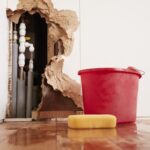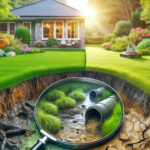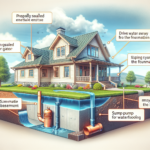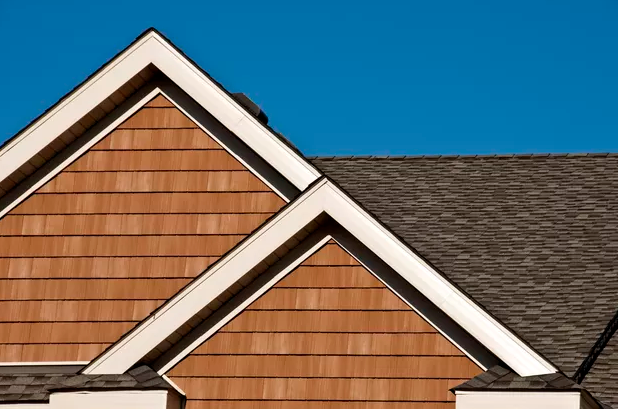A solid roof, like your foundation, is a critical factor in the longevity of your home. It keeps moisture out and helps shield moisture away from the sides of your home. Consequently, for homeowners, protecting your roof is critically important. Here is some important information about your homeowner’s insurance policy and your roof.
Does Homeowners Insurance Cover Roof Leaks?
This depends on the underlying cause of the leak. Covered causes can include circumstances such as an “act of god,” fire or vandalism.
However, there are some scenarios where a roof leak will not be covered by your homeowner’s policy. If you’re filing a homeowner’s claim for a roof leak and the leak can be attributed to the roof’s deterioration, then it’s unlikely your homeowner’s insurance will cover the damage.
Does insurance pay for roof leaks? Yes, however older roofs often have faulty components that can allow moisture to penetrate the home. As a roof gets older, the shingles may shrink or be torn, leaving the roof exposed.
The roof, particularly its edges, can be susceptible to various vermin who want to live in your home, and as they burrow into your roof, they may compromise it. Older roofs are far more likely to be infiltrated by creatures, so it’s crucial to have your roof inspected at least twice a year.
Here are some things to look out for when inspecting your roof for damage by unwelcome creatures:
- Holes in the topmost surface of the roof.
- Gaps between shingles or other roofing components.
- Evidence of nests under the roof or in an attic.
- Animal droppings directly under the roof.
- Frequent scurrying noises in the attic.
- Bees nests attached to roofing components.
- Is the Damage Actually From a Natural Event?
Does Insurance Cover Roof Damage From Wind?
In cases where wind damage can be attributed to an “act of God,” homeowner’s insurance will usually cover it. Whether the expenses are fully covered or covered in part depends on the age of the roof.
Like many assets in and around the home, a roof depreciates as it ages. The drop in value can be attributed to the way the roof naturally weakens with age. When your home is damaged by wind, there’s a chance you may be reimbursed according to the depreciated value of your roof instead of what it would cost to have a brand new roof installed.
In most cases, your insurance company will send an insurance inspector to take stock of your roof. If the damage was due to wear and tear, aging, or your roof’s poor condition, the wind damage might not be covered.
How to Get Homeowners Insurance with a Bad Roof
Securing home insurance with a bad roof can be a challenge, but it’s not impossible. Once a roof sustains damage – whether from aging or a specific event – the entire home can be at risk. However, there are still ways to get your home the insurance it needs, even if your roof isn’t up to standard.
When you apply for insurance, your roof may need to be inspected. If the inspection reveals the roof can’t adequately protect the home, you may be given a chance to repair the roof.
In some cases, your roof may need to be replaced. Your insurance company wants what’s best for your home, so if this is the determination of the inspector, it would wise to follow through on their recommendation.
Replacing a roof may seem like a financial challenge, but the cost may be offset if a weather event impacts your home. As discussed, having an older roof may result in only a portion of the repairs being covered based on the depreciation factor that’s applied to the calculation.
If the damage to your home from a natural event is extensive, and a depreciated roof results in only a portion being covered, you may end up paying more out of pocket than what it would have cost to replace it. A roof inspection is quick and relatively inexpensive. A proper inspection will help you understand exactly what your roof needs and about how much it will cost.
Does Homeowners Insurance Cover Roof Replacement?
In some cases, homeowner’s insurance will cover a roof replacement, but the damage must have been the result of a natural event, vandalism, or other qualifying occurrence.
Generally speaking, insurance only covers damage sustained by occurrences out of the homeowner’s control. The homeowner is responsible for the following:
- Neglect or maintenance.
- Using certain expensive roofing materials, such as slate shingles.
- Roofs composed of more than two layers of shingles or other roofing material.
- How to File a Roof Leak Insurance Claim
Filing an insurance claim for a leaking roof is a relatively straightforward process. Before filing a claim, you’ll need to gather the following information:
- Cause of the leak.
- Day and time the leak was noticed.
- Amount of time the roof has been leaking.
- Damaged items due to moisture from the leak.
- For more information about how to insure your roof and your entire home, reach out to the professionals at NSI Insurance Group.
About Community Public Adjusters
Community Public Adjusters specializes in homeowners and business insurance claim representation. Our public adjusters and property loss consultants work diligently to make sure you get the maximum possible settlement from the insurance company regarding your insurance claim.
We offer claim representation services on a contingency basis, if we do not collect any funds for you, we do not get paid at all. Community Public Adjusters has expert knowledge on how the insurance claim process works. We work with you on every step of the claims process.
We represent home and business owners and have vast experience with the following types of claims
- Fire and smoke damage claims
- Water damage claims
- Flood damage claims
- Theft and vandalism damage claims
- Snow and ice damage claims
- Building collapse claims
- Wind and hail damage claims
- Catastrophic damage claims
- Roof leaks
- Blown off shingles & siding
- All plumbing leaks
- Toilet overflow
- Burst Pipes
- Frozen Pipes





